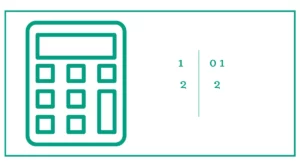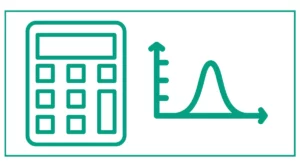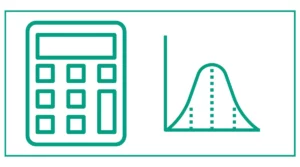Class Rank Calculator
With this class rank calculator, you can effortlessly determine a student's ranking and the total marks they have achieved.
To begin, enter the number of subjects and then enter the scores achieved by the student in each subject to calculate the class rank.
A student's class rank indicates how well they performed. It's usually a percentile.

You might also want to make a leaf and stem chart or calculate the average percentage.
What is Class Rank?
Class rank is a measure of how a student's academic performance compares to that of their classmates. It's typically based on a student's grade point average (GPA) and is expressed as a number or percentile. For example, a student ranked 5th out of 100 students would be in the 95th percentile of their class.
Class rank can play a crucial role in:
- College admissions
- Scholarship applications
- Determining valedictorian and salutatorian honors
- Assessing overall academic standing
It's important to note that not all high schools use class rank, and its significance in college admissions has decreased in recent years. However, many institutions still consider it as one factor in their holistic review process.
How to Calculate Class Rank
Calculating class rank involves comparing your GPA to those of your classmates. While the exact method may vary between schools, here's a general approach to determine your class rank:
- Calculate your GPA
- Obtain the GPAs of all students in your grade
- Sort the GPAs from highest to lowest
- Identify your position in the sorted list
Let's break down each step in more detail:
Step 1: Calculate Your GPA
Your GPA is a numerical representation of your academic performance. To calculate your GPA:
- Assign point values to each grade (e.g., A = 4, B = 3, C = 2, D = 1, F = 0)
- Multiply each grade's point value by the number of credits for that course
- Sum up all the points
- Divide the total points by the total number of credits
For example:
Course Grade Credits Points
Math A (4) 4 16
English B (3) 4 12
Science A (4) 4 16
History B (3) 4 12
Art A (4) 2 8
Total Points: 64
Total Credits: 18
GPA = 64 / 18 = 3.56Step 2: Obtain Classmates' GPAs
This step can be tricky, as schools often keep this information confidential. You may need to ask your guidance counselor or school administration for assistance. Some schools provide class rank information directly, while others may give you a percentile range.
Step 3: Sort GPAs
Once you have the GPAs for your entire class, sort them from highest to lowest. This will give you a clear picture of where your GPA stands in relation to your peers.
Step 4: Identify Your Position
Find your GPA in the sorted list. Your position in this list is your class rank. For example, if your GPA is the 10th highest in a class of 200 students, your class rank would be 10/200.
Class Rank Percentile
Class rank percentile indicates the percentage of students with a lower GPA than yours. To calculate your class rank percentile:
- Subtract your rank from the total number of students
- Divide the result by the total number of students
- Multiply by 100
For example, if you're ranked 10th out of 200 students:
(200 - 10) / 200 = 0.95
0.95 * 100 = 95%Your class rank percentile would be 95%, meaning you performed better than 95% of your classmates.
Weighted vs. Unweighted GPA
Some high schools use a weighted GPA system, which assigns extra points for honors, Advanced Placement (AP), or International Baccalaureate (IB) courses. This can affect class rank calculations:
- Unweighted GPA: Typically on a 4.0 scale
- Weighted GPA: May use a 5.0 or higher scale for advanced courses
For example, in a weighted system:
Regular course A = 4.0
Honors course A = 4.5
AP/IB course A = 5.0When calculating class rank, schools may use either weighted or unweighted GPAs, or a combination of both. It's essential to understand which system your school uses to accurately interpret your class rank.
The Significance of Class Rank in College Admissions
While class rank's importance in college admissions has diminished over the years, many institutions still consider it as part of their holistic review process. According to the National Association for College Admission Counseling, about 9% of colleges view class rank as having considerable importance in admissions decisions.
Class rank can help colleges:
- Understand the rigor of your high school curriculum
- Compare your academic performance to that of your peers
- Evaluate your potential for success in college
However, it's important to note that class rank is just one factor among many that colleges consider. Other important elements include:
- GPA
- Standardized test scores (SAT/ACT)
- Extracurricular activities
- Letters of recommendation
- College essays
- Course rigor
Example: How Class Rank Influences College Admissions
Let's consider two hypothetical students applying to the same college:
Student A:
- GPA: 3.8 (unweighted)
- Class Rank: 15/300 (95th percentile)
- Challenging course load with multiple AP classes
Student B:
- GPA: 4.0 (unweighted)
- Class Rank: 1/100 (99th percentile)
- Standard course load with no AP classes
While Student B has a higher GPA and class rank, the admissions committee might view Student A more favorably due to their more challenging course load and larger class size. This example illustrates how class rank is considered in context with other factors.
Strategies to Improve Your Class Rank
If you're aiming to improve your class rank, consider these strategies:
- Take challenging courses: Enroll in honors, AP, or IB classes if available
- Maintain consistent study habits: Develop a regular study schedule
- Seek help when needed: Don't hesitate to ask teachers or tutors for assistance
- Participate in class: Engage actively in discussions and ask questions
- Complete all assignments: Stay on top of homework and projects
- Prepare for exams: Start studying well in advance of test dates
- Manage your time effectively: Balance academics with extracurricular activities
Remember, while class rank is important, it's not the only measure of your academic success or potential. Focus on learning and personal growth rather than solely on your rank.
Class Rank Controversies and Alternatives
Some educators and institutions have criticized class rank for promoting unhealthy competition and potentially discouraging students from taking challenging courses. As a result, many high schools have moved away from reporting class rank.
Alternatives to class rank include:
- Latin honors systems (cum laude, magna cum laude, summa cum laude)
- Percentile ranges instead of exact ranks
- Grade distribution reports
- Detailed academic profiles
These alternatives aim to provide context for student achievement without the potential drawbacks of precise numerical rankings.

References
- class rank. (2023, January 1). Mizzou Glossary. glossary.missouri.edu/?p=1518
- Denning, J. T., Murphy, R., & Weinhardt, F. (2021, October 15). Class Rank and Long-Run Outcomes. The Review of Economics and Statistics, 1–45. doi.org/10.1162/rest_a_01125





